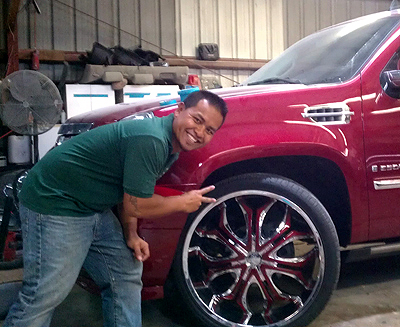Your car’s engine is a finely tuned machine with many moving parts working in perfect harmony. One of the most crucial—and most overlooked—components in that system is the timing belt. If it fails, it can lead to catastrophic engine damage and a hefty repair bill. That’s why replacing your timing belt before it breaks is one of the smartest things you can do as a car owner.

What Does the Timing Belt Do?
The timing belt synchronizes the rotation of the crankshaft and camshaft, ensuring that the engine’s valves open and close at the right times during the intake and exhaust strokes. In simple terms, it keeps your engine running smoothly and efficiently.
If the timing belt snaps while you’re driving, the pistons can collide with the valves, causing severe damage that often requires a full engine rebuild or replacement.
So, When Should You Replace It?
Most manufacturers recommend replacing the timing belt every 60,000 to 100,000 miles, depending on the make and model of your vehicle. But mileage isn’t the only factor—age matters too. Rubber belts deteriorate over time, so even if you haven’t hit the mileage mark, a belt over 7 years old could be at risk.
Here’s a general guideline:
-
Check your owner’s manual for the manufacturer’s recommended replacement interval.
-
If your car has over 75,000 miles and you’ve never changed the belt, it’s time to get it inspected.
-
If you’ve bought a used car and can’t verify the belt was replaced, have it checked by a mechanic right away.
Warning Signs Your Timing Belt May Be Failing
In many cases, a failing timing belt doesn’t give much warning. But some signs to watch for include:
-
Ticking or clicking noises from the engine
-
Engine misfires
-
Oil leaks near the timing belt cover
-
Rough idling or difficulty starting
If you notice any of these symptoms, it’s crucial to bring your vehicle in for an inspection as soon as possible.
Why Preventive Replacement Saves You Money
Yes, replacing a timing belt costs money—but it’s far less expensive than repairing the damage caused by a snapped belt. In interference engines (which many cars have), a broken belt often leads to bent valves, damaged pistons, and even destroyed cylinder heads.
A typical timing belt replacement might cost between $500 and $900 depending on your vehicle. A full engine rebuild from a broken belt? $2,000–$4,000 or more.
Bonus Tip: Replace Related Components Together
When replacing your timing belt, it’s smart to also replace:
-
Water pump (if driven by the belt)
-
Tensioners
-
Idler pulleys
These parts wear at the same rate and are often located in the same area, so replacing them together saves on labor costs and prevents future breakdowns.
Final Thoughts
Don’t wait for your timing belt to break—it’s not a matter of “if,” but when. Proactive maintenance can save your engine, your wallet, and your peace of mind.
Lim’s Auto Body is a full service auto body and mechanical repair shop locally owned and operated in Largo, Florida. For more information, go to our web site www.limsautobody.com or call (727) 422-3232.

